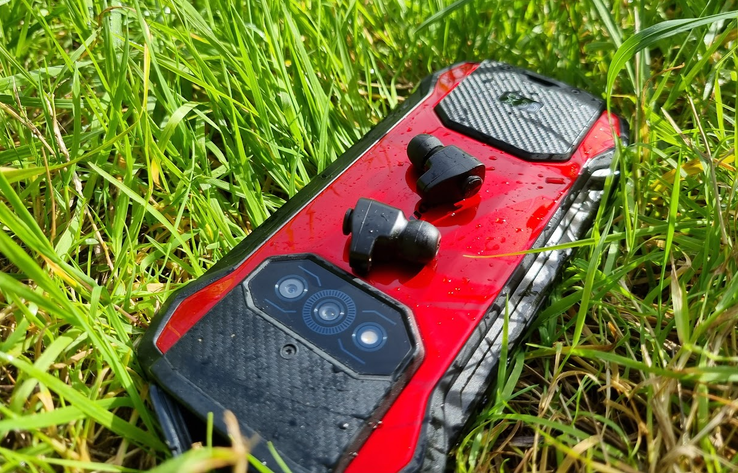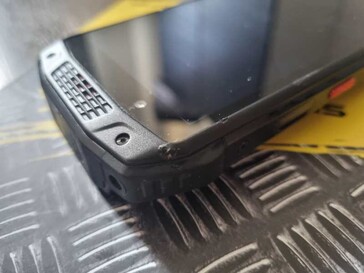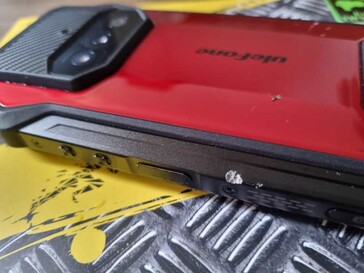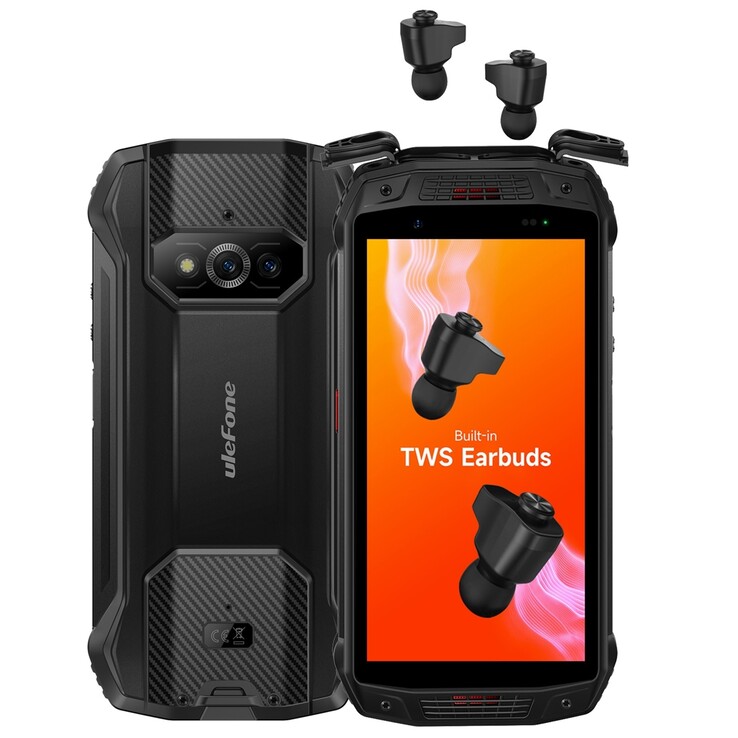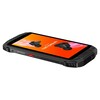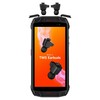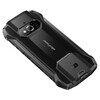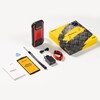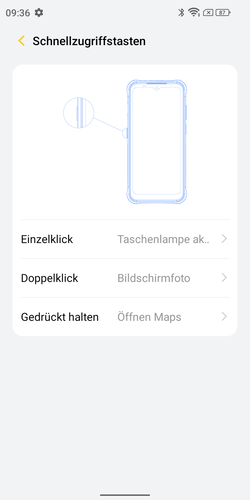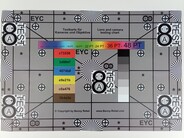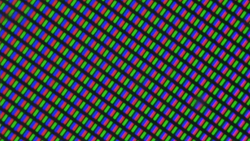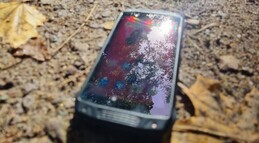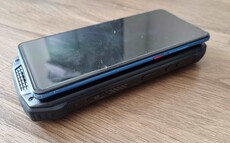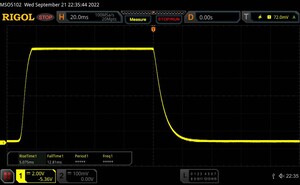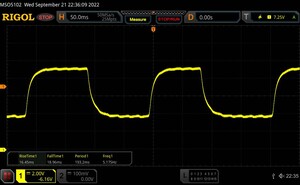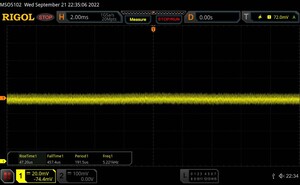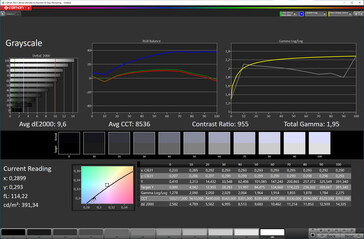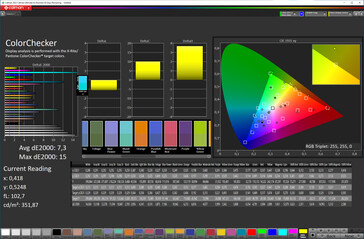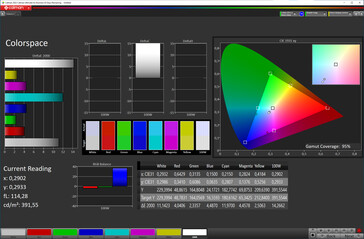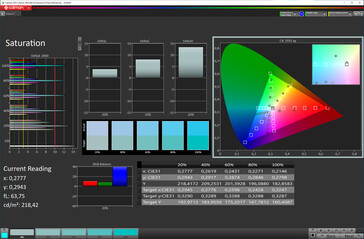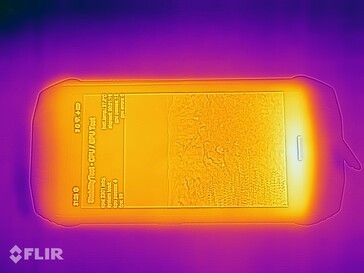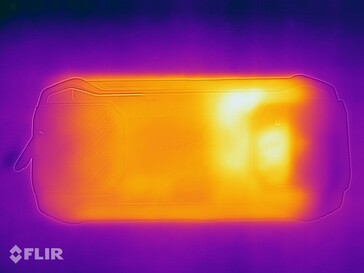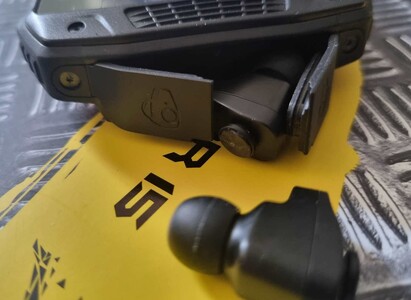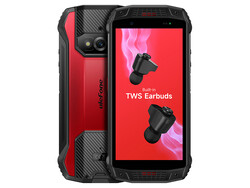Ulefone Armor 15 smartphone review - Rugged outdoor phone with headphones
Possible competitors in comparison
Rating | Date | Model | Weight | Drive | Size | Resolution | Price |
|---|---|---|---|---|---|---|---|
| 74.5 % v7 (old) | 10 / 2022 | Ulefone Armor 15 Helio G35, PowerVR GE8320 | 346 g | 128 GB UFS 2.0 Flash | 5.45" | 1440x720 | |
| 81.9 % v7 (old) | 08 / 2022 | Samsung Galaxy XCover 6 Pro SD 778G 5G, Adreno 642L | 235 g | 128 GB UFS 2.2 Flash | 6.60" | 2408x1080 | |
| 79.7 % v7 (old) | 08 / 2022 | AGM Glory G1S SD 480, Adreno 619 | 315 g | 128 GB UFS 2.2 Flash | 6.53" | 2340x1080 | |
| 81.1 % v7 (old) | 08 / 2021 | Nokia XR20 SD 480, Adreno 619 | 248 g | 128 GB UFS 2.1 Flash | 6.67" | 2400x1080 |
Case and features - Solid smartphone with metal and rubber
The Ulefone Armor 15 is a so-called rugged smartphone, which means that it is supposed to withstand harsh environmental conditions without damage and is therefore, as usual for such devices, not very compact. In addition, two completely wireless earphones (TWS headphones) can be stored and charged inside the smartphone, which pushes the weight and dimensions even higher - the smartphone weighs 346 grams (~0.76 lb) and is 20 millimeters (~0.8 in) thick at its thickest point.
The display edges are particularly wide on the top and bottom, which is why the smartphone is significantly larger than, for example, the Samsung Galaxy S21, despite the still compact display of 5.45 inches. The casing itself is torsion-resistant and reinforced with rubber edges at the top and bottom. All inputs and outputs are protected by rubber covers. The smartphone lacks Widevine certification, and the L3 rating only allows playing back corresponding material with reduced resolution.
Resilience - The Ulefone Armor 15 keeps its promises
The smartphone is certified according to IP68, IP68K and MIL-STD-810, which means that the smartphone is supposed to be protected against drops from up to 1.5 meters (~4.9 ft) and can be submerged for up to 30 minutes at a depth of 1.5 meters (~4.9 ft). In addition, the smartphone should not be affected by negative pressure, increased humidity, contact with an acidic atmosphere and solar radiation.
The model could also prove the advertised properties in the test. The Armor 15 was dropped from a height of 150 centimeters (~4.9 ft) onto a pavement slab a total of seven times, without installing the included thick protective foil beforehand. Damage was mainly to the reinforced rubber corners. An intentional drop onto the edge of the slab actually scratched a piece of the metal casing significantly, but it remained with cosmetic damage to the case - and a minimal scratch in the display. Even after the drop test, the water resistance to jets of water and immersion remained.
| SD Card Reader - average JPG Copy Test (av. of 3 runs) | |
| Average of class Smartphone (5.72 - 58.9, n=67, last 2 years) | |
| Samsung Galaxy XCover 6 Pro (Angelbird V60) | |
| AGM Glory G1S (Angelbird V60) | |
| Nokia XR20 (Angelbird V60) | |
| Ulefone Armor 15 (Angelbird AV Pro V60) | |
Cross Platform Disk Test (CPDT)
Communication, software and operation - Pure Android, extensive LTE coverage
Positive: Ulefone uses version 12 of Android without bloatware in the Armor 15. Additional software, for example for outdoor activities, is not installed.
The connection to a 5G mobile network is not possible, but LTE is available. Numerous frequency bands are supported, including the bands that are relevant in Germany - the Ulefone Armor 15 also supports band 20, which is not always supported by cheap imported smartphones. Operation with two SIM cards is possible, and thanks to three card slots, memory expansion via microSD card and dual-SIM are also possible at the same time. However, the microSD card reader only manages below-average data transfer rates and also does not support the exFAT standard. NFC and thus wireless payment is possible. The FM radio can - and must due to the lack of a jack - be used without a connected cable headset, which can be useful in view of the TWS headphones, for example when hiking.
The touchscreen has a glove mode, which allowed the user to operate it even with thick wool gloves in the test. Ulefone has also installed a dedicated camera button on the right side of the casing, and a configurable quick access key is found on the left. This can be assigned with some useful functions, such as the flashlight, but also allows opening apps. Different actions can be defined for a single, a double click and a longer press. The fingerprint sensor in the power button worked reliably in the test, and unlocking with the face is also easy to use in sufficient brightness.
| Networking | |
| iperf3 transmit AX12 | |
| Nokia XR20 | |
| iperf3 receive AX12 | |
| Nokia XR20 | |
| AGM Glory G1S | |
| iperf3 transmit AXE11000 | |
| AGM Glory G1S | |
| Ulefone Armor 15 | |
| iperf3 receive AXE11000 | |
| Ulefone Armor 15 | |
Cameras - Overwhelmed in low light
The Ulefone Armor 15 has two cameras on the back - the Sony IMX363 sensor offers a resolution of 12 megapixels, plus an S5K3M3 sensor from Samsung with ultra-wide-angle optics. An infrared or night vision camera like in the AGM Glory G1S is not part of the equipment.
The main camera offers a usable quality, at least under optimal conditions, but the sharpness of higher-quality smartphones, such as the Honor Magic4 Pro, is not reached. Overall, the main camera lacks details, and the sensor cannot adequately capture scenes with a large contrast range in particular. The low contrast range and the lack of details also affect the ultra-wide-angle lens. The overall recording quality deteriorates significantly in low brightness.
Video recording is also possible in Full HD resolution with 30 frames per second, although the video recordings also lack details and the autofocus does not work fast enough during fast movements.
The rugged smartphone is equipped with a 16-megapixel front-facing camera. The image quality is more than sufficient for video calls, but the camera's sharpness is not particularly high either. Due to the low brightness of the display, the display flash is not always useful.
Image comparison
Choose a scene and navigate within the first image. One click changes the position on touchscreens. One click on the zoomed-in image opens the original in a new window. The first image shows the scaled photograph of the test device.
Main cameraMain cameraUltra wide angleZoomLow-Light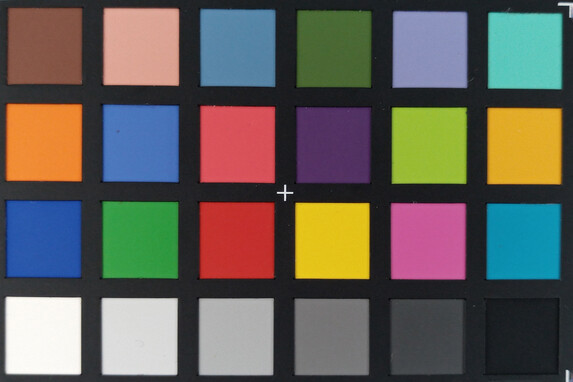

Display - Too dark, too small, too low resolution
The 5.45-inch display offers a resolution of 1,440 x 720 pixels, which is no longer standard in 2022. However, since the screen diagonal is still relatively small, the extent of the subjectively experienced blurriness is still limited. The color reproduction and brightness distribution are acceptable - this is only partly true for the brightness itself.
Although the Ulefone Armor 15 can beat the competing AGM Glory G1S in terms of brightness, 407 cd/m² results in reflections in the manufacturer's intended outdoor use. The minimum brightness is exceptionally high, which results in a lot of eye strain when used at night. The screen's slight bluish cast, which can be measured, is not annoying in use. In the test, there were indications of the use of temporal dithering.
| |||||||||||||||||||||||||
Brightness Distribution: 96 %
Center on Battery: 416 cd/m²
Contrast: 1124:1 (Black: 0.37 cd/m²)
ΔE ColorChecker Calman: 7.3 | ∀{0.5-29.43 Ø4.79}
ΔE Greyscale Calman: 9.6 | ∀{0.09-98 Ø5}
95% sRGB (Calman 2D)
Gamma: 1.95
CCT: 8536 K
| Ulefone Armor 15 IPS, 1440x720, 5.5" | Samsung Galaxy XCover 6 Pro PLS, 2408x1080, 6.6" | AGM Glory G1S IPS, 2340x1080, 6.5" | Nokia XR20 IPS, 2400x1080, 6.7" | |
|---|---|---|---|---|
| Response Times | 17% | 3% | 5% | |
| Response Time Grey 50% / Grey 80% * (ms) | 35.41 ? | 31 ? 12% | 29 ? 18% | 36 ? -2% |
| Response Time Black / White * (ms) | 17.89 ? | 14 ? 22% | 20 ? -12% | 16 ? 11% |
| PWM Frequency (Hz) | 5221 | 1163 ? | ||
| Screen | 2% | 8% | 39% | |
| Brightness middle (cd/m²) | 416 | 510 23% | 390 -6% | 599 44% |
| Brightness (cd/m²) | 407 | 495 22% | 377 -7% | 598 47% |
| Brightness Distribution (%) | 96 | 92 -4% | 91 -5% | 99 3% |
| Black Level * (cd/m²) | 0.37 | 0.46 -24% | 0.43 -16% | 0.33 11% |
| Contrast (:1) | 1124 | 1109 -1% | 907 -19% | 1815 61% |
| Colorchecker dE 2000 * | 7.3 | 7.41 -2% | 5.13 30% | 4.52 38% |
| Colorchecker dE 2000 max. * | 15 | 13.26 12% | 7.96 47% | 7.6 49% |
| Greyscale dE 2000 * | 9.6 | 10.6 -10% | 5.7 41% | 4.2 56% |
| Gamma | 1.95 113% | 2.518 87% | 2.423 91% | 2.279 97% |
| CCT | 8536 76% | 10050 65% | 7974 82% | 7309 89% |
| Total Average (Program / Settings) | 10% /
5% | 6% /
7% | 22% /
32% |
* ... smaller is better
Display Response Times
| ↔ Response Time Black to White | ||
|---|---|---|
| 17.89 ms ... rise ↗ and fall ↘ combined | ↗ 5.075 ms rise | |
| ↘ 12.81 ms fall | ||
| The screen shows good response rates in our tests, but may be too slow for competitive gamers. In comparison, all tested devices range from 0.1 (minimum) to 240 (maximum) ms. » 39 % of all devices are better. This means that the measured response time is better than the average of all tested devices (20.3 ms). | ||
| ↔ Response Time 50% Grey to 80% Grey | ||
| 35.41 ms ... rise ↗ and fall ↘ combined | ↗ 16.45 ms rise | |
| ↘ 18.96 ms fall | ||
| The screen shows slow response rates in our tests and will be unsatisfactory for gamers. In comparison, all tested devices range from 0.165 (minimum) to 636 (maximum) ms. » 48 % of all devices are better. This means that the measured response time is worse than the average of all tested devices (31.7 ms). | ||
Screen Flickering / PWM (Pulse-Width Modulation)
| Screen flickering / PWM detected | 5221 Hz | ||
The display backlight flickers at 5221 Hz (worst case, e.g., utilizing PWM) . The frequency of 5221 Hz is quite high, so most users sensitive to PWM should not notice any flickering. In comparison: 53 % of all tested devices do not use PWM to dim the display. If PWM was detected, an average of 8163 (minimum: 5 - maximum: 343500) Hz was measured. | |||
Performance, emissions and battery life - Long runtime and weak performance
The Helio G35 is a low-priced SoC, which has eight Cortex A53 cores. These clock with up to 2.3 GHz. The working memory of six gigabytes is appropriate for the price range. The performance of the Helio G35 is unremarkable, leaving the Ulefone Armor 15 slow compared with other tested - but also more expensive - rugged smartphones like the AGM Glory G1S.
The weak performance that is evident in the benchmarks is also seen in actual use. Even simple apps do not start without lags. In general, the operating speed is still acceptable, but the refresh rate of only 60 Hz is not conducive to a smooth experience. The Ulefone Armor 15 does not get particularly warm.
The speakers offer a good reproduction quality. The speakers' high, achievable volume might be relevant for outdoor use. The somewhat low-bass reproduction also benefits from the presence of two speakers, which are found above and below the display. Even at higher volumes there are no noticeable distortions.
As expected, the strong 6,000 mAh battery offers a high battery life and reaches a whole 1,059 minutes of runtime in the Wi-Fi test - and thus trumps both the AGM Glory G1S as well as the Samsung Galaxy XCover 6 Pro. Charging is possible with 18 watts, and a charger with a maximum charging power of 15 watts is included.
| GFXBench | |
| on screen Aztec Ruins Normal Tier Onscreen (sort by value) | |
| Ulefone Armor 15 | |
| Samsung Galaxy XCover 6 Pro | |
| AGM Glory G1S | |
| Nokia XR20 | |
| Average Mediatek Helio G35 (7.4 - 8.1, n=5) | |
| Average of class Smartphone (6.2 - 166, n=206, last 2 years) | |
| 1920x1080 Aztec Ruins Normal Tier Offscreen (sort by value) | |
| Ulefone Armor 15 | |
| Samsung Galaxy XCover 6 Pro | |
| AGM Glory G1S | |
| Nokia XR20 | |
| Average Mediatek Helio G35 (4.1 - 4.2, n=5) | |
| Average of class Smartphone (3.4 - 332, n=206, last 2 years) | |
| on screen Aztec Ruins High Tier Onscreen (sort by value) | |
| Ulefone Armor 15 | |
| Samsung Galaxy XCover 6 Pro | |
| AGM Glory G1S | |
| Nokia XR20 | |
| Average Mediatek Helio G35 (4.7 - 5, n=5) | |
| Average of class Smartphone (0.85 - 144, n=207, last 2 years) | |
| 2560x1440 Aztec Ruins High Tier Offscreen (sort by value) | |
| Ulefone Armor 15 | |
| Samsung Galaxy XCover 6 Pro | |
| AGM Glory G1S | |
| Nokia XR20 | |
| Average Mediatek Helio G35 (1.4 - 1.5, n=5) | |
| Average of class Smartphone (1.2 - 129, n=206, last 2 years) | |
| Ulefone Armor 15 | Samsung Galaxy XCover 6 Pro | AGM Glory G1S | Nokia XR20 | Average 128 GB UFS 2.0 Flash | Average of class Smartphone | |
|---|---|---|---|---|---|---|
| AndroBench 3-5 | 393% | 275% | 279% | 168% | 954% | |
| Sequential Read 256KB (MB/s) | 285.68 | 841.6 195% | 497.9 74% | 485 70% | 530 ? 86% | 2216 ? 676% |
| Sequential Write 256KB (MB/s) | 161.1 | 484.7 201% | 484.1 200% | 452 181% | 212 ? 32% | 1832 ? 1037% |
| Random Read 4KB (MB/s) | 64.99 | 170.6 163% | 168 159% | 174.8 169% | 130.6 ? 101% | 293 ? 351% |
| Random Write 4KB (MB/s) | 18.36 | 204.2 1012% | 141 668% | 146.2 696% | 101.2 ? 451% | 340 ? 1752% |
Temperature
(+) The maximum temperature on the upper side is 33.9 °C / 93 F, compared to the average of 35.2 °C / 95 F, ranging from 21.9 to 247 °C for the class Smartphone.
(+) The bottom heats up to a maximum of 33.7 °C / 93 F, compared to the average of 34 °C / 93 F
(+) In idle usage, the average temperature for the upper side is 28.9 °C / 84 F, compared to the device average of 32.9 °C / 91 F.
Speaker
Ulefone Armor 15 audio analysis
(+) | speakers can play relatively loud (94.5 dB)
Bass 100 - 315 Hz
(-) | nearly no bass - on average 22.9% lower than median
(+) | bass is linear (2.2% delta to prev. frequency)
Mids 400 - 2000 Hz
(±) | reduced mids - on average 7.3% lower than median
(+) | mids are linear (4.4% delta to prev. frequency)
Highs 2 - 16 kHz
(+) | balanced highs - only 4.8% away from median
(+) | highs are linear (3.5% delta to prev. frequency)
Overall 100 - 16.000 Hz
(±) | linearity of overall sound is average (16.9% difference to median)
Compared to same class
» 8% of all tested devices in this class were better, 7% similar, 85% worse
» The best had a delta of 12%, average was 35%, worst was 134%
Compared to all devices tested
» 29% of all tested devices were better, 8% similar, 64% worse
» The best had a delta of 4%, average was 24%, worst was 134%
Nokia XR20 audio analysis
(+) | speakers can play relatively loud (83.9 dB)
Bass 100 - 315 Hz
(-) | nearly no bass - on average 32.9% lower than median
(±) | linearity of bass is average (14.2% delta to prev. frequency)
Mids 400 - 2000 Hz
(±) | higher mids - on average 5.4% higher than median
(+) | mids are linear (5.1% delta to prev. frequency)
Highs 2 - 16 kHz
(+) | balanced highs - only 3.1% away from median
(+) | highs are linear (4% delta to prev. frequency)
Overall 100 - 16.000 Hz
(±) | linearity of overall sound is average (24.2% difference to median)
Compared to same class
» 55% of all tested devices in this class were better, 8% similar, 37% worse
» The best had a delta of 12%, average was 35%, worst was 134%
Compared to all devices tested
» 72% of all tested devices were better, 6% similar, 22% worse
» The best had a delta of 4%, average was 24%, worst was 134%
Headphones - A nice addition
The included headphones fit into the smartphone's casing and are also charged there. The Earbuds are protected from environmental influences by rubber seals, which also provided sufficient protection from water in the test. The headphones are equipped with touch surfaces for operation, whereby playback can be paused and continued, and the next or previous track can also be selected.
In terms of sound quality, the headphones are relatively well positioned and offer a relatively clear sound image even at high volumes. However, the headphones are clearly inferior to Samsung's Galaxy Buds2 Pro, at least in terms of frequency measurement, but the playback quality is quite suitable in practice. The compact headphones are charged in the smartphone. The disadvantage is that the headphones do not have a microphone, which makes them unsuitable as hands-free devices. This would be particularly useful for outdoor use.
Ulefone Armor 15 TWS audio analysis
(+) | speakers can play relatively loud (93.2 dB)
Bass 100 - 315 Hz
(-) | nearly no bass - on average 15.3% lower than median
(+) | bass is linear (2.3% delta to prev. frequency)
Mids 400 - 2000 Hz
(±) | higher mids - on average 7.9% higher than median
(+) | mids are linear (6.2% delta to prev. frequency)
Highs 2 - 16 kHz
(±) | higher highs - on average 9.8% higher than median
(±) | linearity of highs is average (7.6% delta to prev. frequency)
Overall 100 - 16.000 Hz
(±) | linearity of overall sound is average (19.4% difference to median)
Compared to same class
» 46% of all tested devices in this class were better, 7% similar, 46% worse
» The best had a delta of 4%, average was 24%, worst was 134%
Compared to all devices tested
» 46% of all tested devices were better, 7% similar, 46% worse
» The best had a delta of 4%, average was 24%, worst was 134%
Samsung Galaxy Buds2 Pro audio analysis
(+) | speakers can play relatively loud (95.6 dB)
Bass 100 - 315 Hz
(±) | reduced bass - on average 13.6% lower than median
(+) | bass is linear (2.1% delta to prev. frequency)
Mids 400 - 2000 Hz
(±) | reduced mids - on average 7.6% lower than median
(+) | mids are linear (5.7% delta to prev. frequency)
Highs 2 - 16 kHz
(±) | higher highs - on average 12.2% higher than median
(+) | highs are linear (5.2% delta to prev. frequency)
Overall 100 - 16.000 Hz
(±) | linearity of overall sound is average (18.3% difference to median)
Compared to same class
» 39% of all tested devices in this class were better, 8% similar, 54% worse
» The best had a delta of 4%, average was 24%, worst was 134%
Compared to all devices tested
» 39% of all tested devices were better, 8% similar, 54% worse
» The best had a delta of 4%, average was 24%, worst was 134%
Battery life
| Battery Runtime - WiFi Websurfing | |
| Average of class Smartphone (12.1 - 54.1, n=204, last 2 years) | |
| Ulefone Armor 15 | |
| AGM Glory G1S | |
| Nokia XR20 | |
| Samsung Galaxy XCover 6 Pro | |
Pros
Cons
Verdict - Durable and slow smartphone with a twist
With the Armor 15, Ulefone offers a smartphone that basically lives up to the manufacturer's self-imposed goals. The integration of the TWS headphones is basically successful, and they even offer a quite high playback quality.
Weak points are the rather dark and low-resolution display and the low performance of the installed SoC.
The performance also affects daily use. The casing, on the other hand, is completely convincing. It is extremely robust and can actually withstand heavy loads. Even after dropping it the water resistance is still good, and the build quality of the model is basically impeccable.
The Ulefone Armor 15 is a smartphone for outdoor professionals and music fans - and only one pocket.
However, Ulefone definitely launches a smartphone for a very pointed target group on the market with the Armor 15, whereby the advertised price of just under 260 Euros (~$251) can definitely put the smartphone's weaknesses into perspective. The bulky and heavy device might be annoying in daily use. Customers looking for a more powerful device will have to pay much more for the Glory G1S from AGM, for example. An alternative from a larger manufacturer would be the Samsung Galaxy XCover 6 Pro, which is also available for a much higher price.
Price and availability
The Ulefone Armor 15 Pro is available directly from the manufacturer, or at Amazon. The model is offered in three color variants.
Ulefone Armor 15
- 10/11/2022 v7 (old)
Silvio Werner




